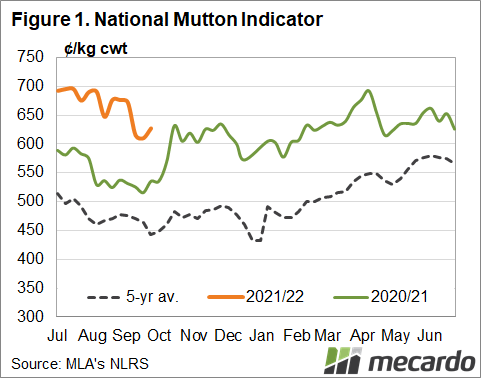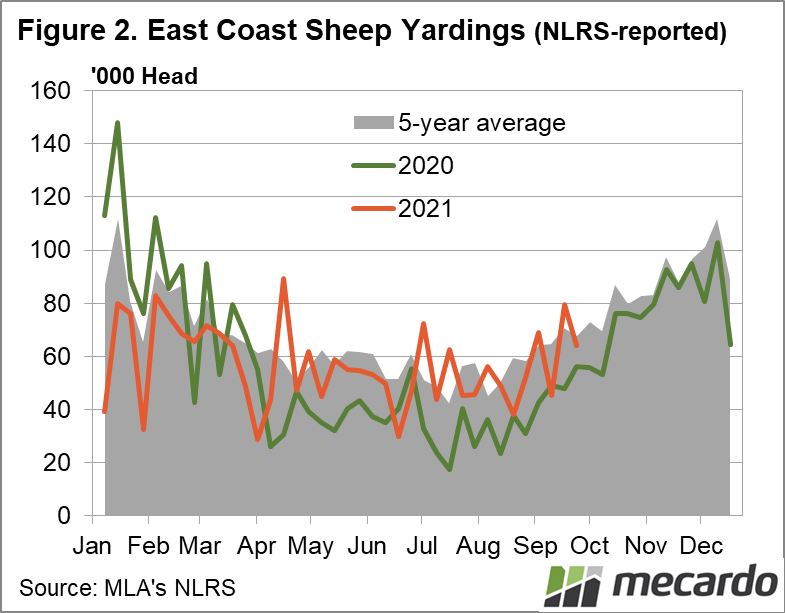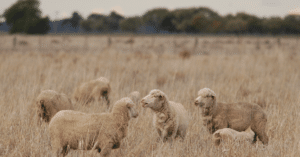Without wanting to sound like a broken record - how good’s the money for mutton? Fair enough, with new highs of $500 being set for first-cross empty replacements already this spring, the changeover rate still might look a little daunting, but if you are breeding your own - and you’ve got plenty on the ground thanks to those paddocks full of green grass - there’s rarely been a time to be more selective of which ewes are classed or aged out of your system.
We can see from figure one that the National Mutton Indicator took its usual step-down through the middle of September, recording weekly average rates of more than 30ȼ/kg cwt lower than any other week since the start of July. That said, the average NMI for September is 632ȼ/kg – more than 100ȼ/kg dearer than the September average in 2020. And seasonal patterns show it is likely on its way up, and should stay relatively strong through to the end of the year. Mutton returns haven’t even been close to their five-year averages since mid-2018, a year in which it averaged 441ȼ/kg. In 2020, the NMI averaged 607ȼ/kg, while for the year-to-date so far it is averaging 646ȼ/kg.
According to Meat & Livestock Australia, mutton saleyard supply is 18% less than the five-year-average for the year-to-date, but 11% higher than last year. And we can see from Figure 2 that supply since July has been above year-ago levels, and predominantly above the five-year average as well. With the NMI closing last week 17% higher year-on-year, and the east coast sheep yardings up 40% year-on-year for the same week, it wouldn’t appear a lack of saleyard throughput is the main driver.
Slaughter however did drop below year-ago levels for a fortnight at the start of September – to weekly totals about 50% below the five-year average, but has since bounced back to close to average levels. Supply does always kick in at this time of year, but demand isn’t going anywhere, with export quantities well down on last year (due to supply), and clear intentions of further flock growth.
What does it mean?
We said back in June that it was a good time to turn off any underperforming ewes, and it was, with the three winter months reaching the highest ever NMI monthly averages on record. Seasonally the spring flush puts the brakes on mutton reaching mid-winter peaks, but the price still looks to remain as high as it has ever been at this time of year. Even if feed is plentiful, if you are weaning or selling lambs soon it might offer a good opportunity to class ewes for performance and age.
Have any questions or comments?
Key Points
- The National Mutton Indicator is averaging 646ȼ/kg for the year-to-date, 6% higher than 2020.
- Saleyard supply jumps higher, up more than 10% year-on-year so far in 2021.
- Mutton price on the path to stay at historically highs through spring
Click on figure to expand
Click on figure to expand
Click on figure to expand
Data sources: Mecardo; Meat & Livestock Australia;














